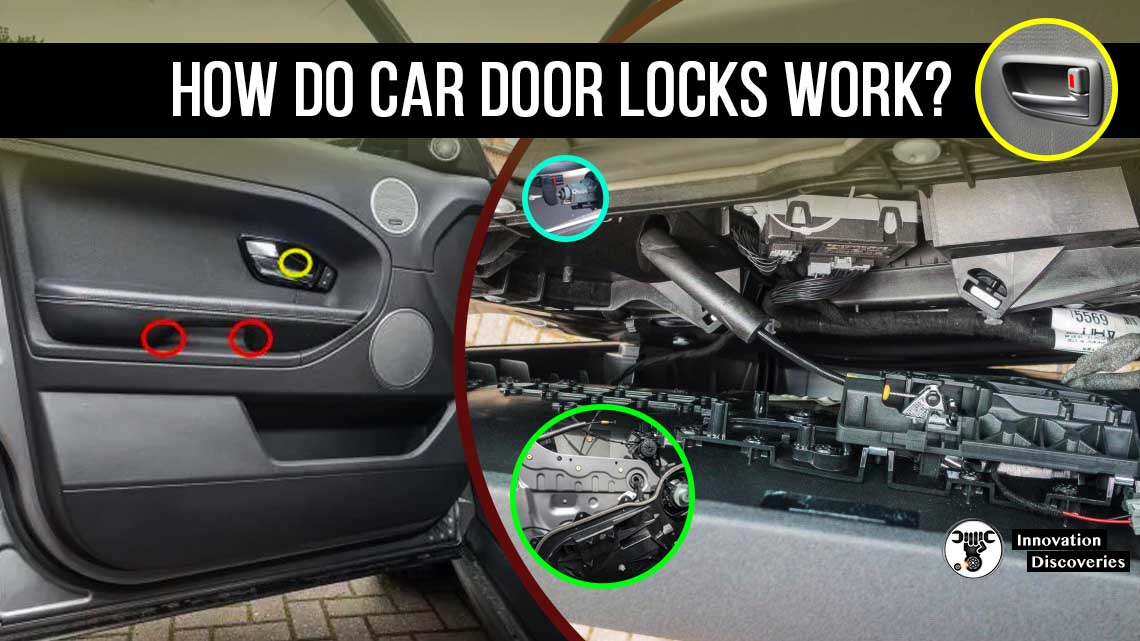
The simple function of a car door lock
The process of keeping your vehicle secure can include a variety of measures in addition to the car door locks that exist on the car.
However, many drivers will not be aware of the workings of the lock and are able to do nothing more than lock and unlock it.
Being aware of how these work will help you to determine what will be necessary should a defect arise and what additional safety measures are required.
Many drivers will only be aware of the car door lock button inside the car, which can be operated by hand or automatically with a remote.
This lever or latch is the visible portion of the link to the actuator, which controls the car door locks.
In addition to the lock mechanism, there is a lever that is connected to the system which enables you to open the door once the door is unlocked.
There is much more going on below the surface within the panel that the car door locks are housed in.
The visible latch is the small button that goes up and down according to whether the car is locked or unlocked.
It is attached to a metal rod, which links it to the main body of the lock mechanism.
Where the lock has the ability to be operated automatically, there are additional components that will be found as part of the locking mechanism.
This will either be an electronic sensor or magnets with a reversible switch.
Where the door ceases to be able to be opened with the use of the remote, you will know that the cause is a defect to the electronic sensor or the magnets.
The car door lock is very important, so look after it and make sure it functions well and correctly always.
More:
Whether they are single-purpose or multi-purpose, electronic car door locks have standard features:
- A latch/door lock
- An actuator
- Actuator rods
- Activated by radio
Electric car door locks operate by receiving a radio signal transmitted by the car key fob, signalling the actuator to activate, which then routes the command through the correct path (lock/unlock) and performs the desired action.
How the actuator works
On activation, the actuator unit moves a rod attached to the rear of the latch/door lock mechanism.
The rod exerts pressure on the lock-open switch on the back of the door lock mechanism.
The pressure opens a pair of jaws on the latch/door lock mechanism, releasing the jaws from the strike on the center pillar.
The action connects the door handles to the latch/door lock mechanism. The door opens when you lift the inside or outside door handle.
Computer-controlled automatic locks
A computer-controlled lock system also uses a radio signal to wake up door lock and unlock mode.
The computer-controlled system sends out computer programming to the key controller module (computer).
The module reads the programming that is directed its way and applies the proper system command.
The computer-controlled key usually controls not only locking and unlocking doors but also auto security.
The auto security piece includes car halt/disable programs that effectively make your car undrivable by potential thieves.
The same system has the capability to:
- Open the trunk lid
- Remote start the car
- Lower the windows
- Kill the ignition
This system is potentially feature-rich.
It depends on the amount the customer wants to spend, provided the manufacturer offers it.
One more way that automatic locks work is by keypad. Introduced 35 years ago, the keypad system appeared first in 1980 on Ford cars and trucks.
Still available today, a car owner simply enters a computer code and the controller module tells the door actuator to go to work.
Related Content:
- POWER WINDOW REGULATOR, WINDOW MOTOR: PROBLEMS, TESTING, REPLACEMENT
- ADJUSTING AND REPLACING WINDOW-WINDING MECHANISMS | OLD VEHICLE
- WHAT IS AIRBAG? HOW IT WORKS DURING AN ACCIDENT?
- WHAT DOES A SPOILER DO FOR A CAR? THE DETAILS
- RENEWING HINGE PINS AND HINGES
Visit Forum
Visit Our Friendly Website

